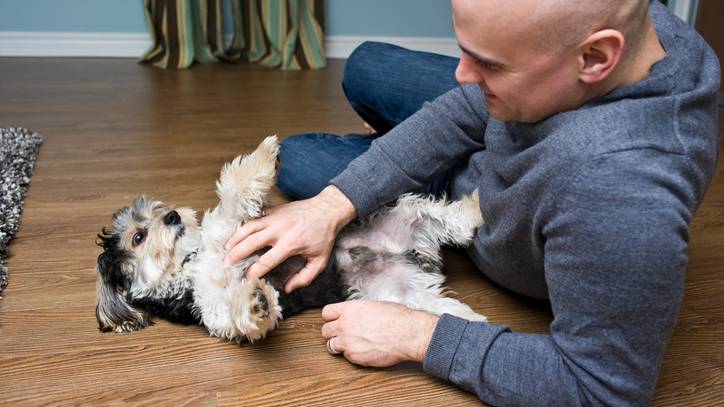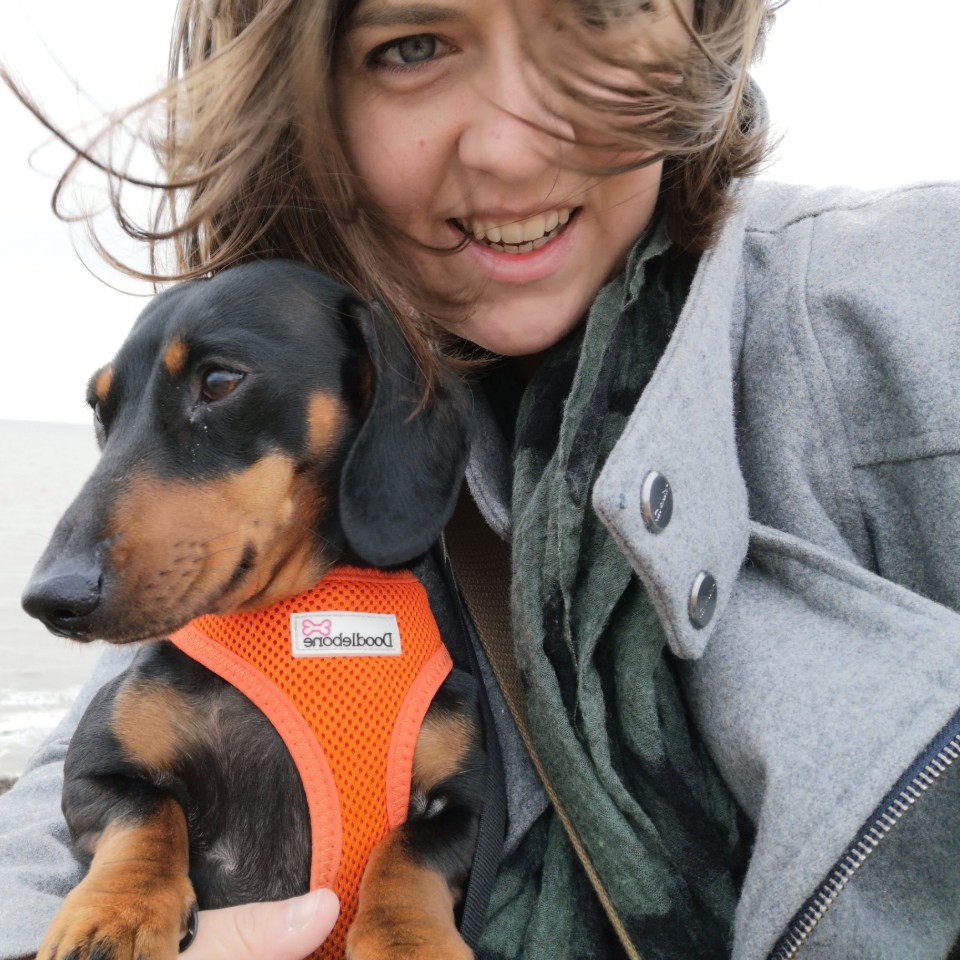Do dogs have belly buttons?
Ever wondered "Do dogs have belly buttons?" Discover whether your dog’s tummy button actually exists – and how to find it!

It’s the kind of question that could keep you up at night or randomly pop into your head when you’re supposed to be doing something else. That’s right, do dogs have belly buttons? Perhaps you’ve even thought about it when rewarding them with the best dog treats for rolling over or showing you their tummy.
The simple answer is yes, they do. Pretty much all mammals (marsupials being an exception) have belly buttons, but you shouldn’t expect your dog’s belly button to be just like yours. In fact, humans are the weird ones among the animal world for how large and prominent our belly buttons are.
Technically or medically known as the 'umbilicus', most dogs' belly buttons are practically imperceptible, especially if you’ve got a particularly furry friend. Just like humans, puppies rely on the umbilical cord when they’re inside their mother’s womb to deliver nutrition and oxygen, as well as remove waste.
Once the puppy is born, the cord is no longer needed and so the mother will chew through the umbilical cord leaving behind a small stump that will generally dry out and drop off within a few days. Each puppy in the litter has its own umbilical cord.
Basically, what’s left behind is a scar (that's also true for humans). The difference with dogs is that you may not be able to see or feel it – especially if you’re not actively looking for it.
What does a belly button look like on a dog?
A dog’s belly button is generally nothing like that of a human’s. Comparatively, they’re much smaller than a human’s, and will also be relative to the size of the dog. You also won’t be able to see 'innies' or 'outies' like you would with a human.
If you’ve got a particularly furry dog, then you might find it difficult to find your dog’s tummy button. If on the other hand, you have a short-haired dog or one with a fairly bald tummy, you might have better luck.
Get the best advice, tips and top tech for your beloved Pets
Most often, a dog’s belly button will be a small, flat scar. Usually, this will be covered in fur, so you might have to part the fur to get a glimpse. Sometimes, the scar will be bald and so you’ll be able to see it better. Other times, the belly button may have a rosette-like pattern around it in the fur, so it’ll be more obvious.
That said, dogs don’t really pay much attention to their belly buttons, so your desire to see it might be out of curiosity rather than anything else.
Can you feel a dog's belly button?
It is difficult to feel a dog’s belly button, especially if you’re not actively looking to find it. Since the dog’s belly button is very small, the best you might notice is a slight bump or ridge on the tummy.
You could try searching for it next time you’re trying to discover are dogs ticklish by scratching their tummy. See if you can find the answer to the question can dogs laugh by giving the area a good tickle too – whether or not you discover the belly button, it’s a great bonding exercise for you and your dog.
That said, something you should be aware of is an 'umbilical hernia', which can present itself as a lump or swelling on the lower underbelly of your dog. This is not normal and should be checked over at your vet at the first opportunity.
How do you find a dog’s belly button?
As we said, it can be quite hard to find your dog’s belly button, but you can both have a lot of fun trying to find it. Especially if you’ve got a dog who loves to please you by rolling onto its back or begging for tummy rubs (so, pretty much every dog).
Start by looking at the base of the rib cage, usually found between two of your dog’s nipples. Often, you’ll be able to see some tufts of hair that meet, and if you’re lucky, you’ll see the small scar that represents the belly button right there. Occasionally, there might also be a darker patch of hair where the belly button is.
You might also have better luck looking for your dog’s belly button when they are a young puppy. The scar will generally fade over time, with the fur growing over it as the dog gets older too.
Once you’ve found the likely area, you could try pressing (gently) around it and you might find that you can feel a slight difference in skin texture, or move the fur out of the way to see a small scar. This will be easier with some breeds, depending on their fur pattern or propensity for letting you investigate their tummy.
Amy Davies is a freelance writer and photographer with over 15 years experience. She has a degree in journalism from Cardiff University and has written about a huge variety of topics over the years. These days she mostly specialises in technology and pets, writing across a number of different titles including TechRadar, Stuff, Expert Reviews, T3, Digital Camera World, and of course PetsRadar. She lives in Cardiff with her dog, Lola, a rescue miniature dachshund.

